Following Mariner 2’s successful flyby of Venus in December 1962, and Mariner 4’s successful flyby of Mars in July 1965, in 1967 NASA once again turned its attention toward Venus. Modifying the backup Mariner 4 spacecraft to operate closer to the Sun, on June 14, 1967, NASA launched Mariner 5 on a 127-day journey to the mysterious cloud-shrouded planet. Managed and operated by NASA’s Jet Propulsion Laboratory in Pasadena, California, Mariner 5 flew by Venus on Oct. 19, 1967. The spacecraft returned useful information about the planet’s atmosphere and its radiation and magnetic field environment. The Soviet Union launched their Venera 4 spacecraft during the same launch window, its capsule descending into the planet’s atmosphere before falling silent. Scientists compared the results from the two spacecraft.
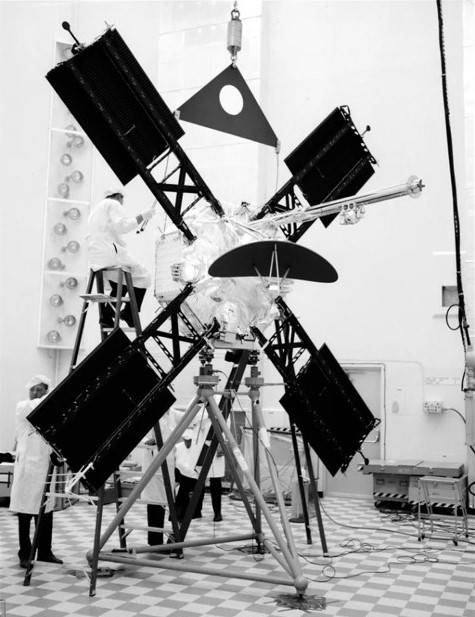
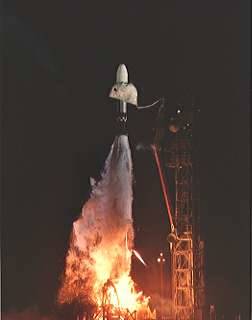
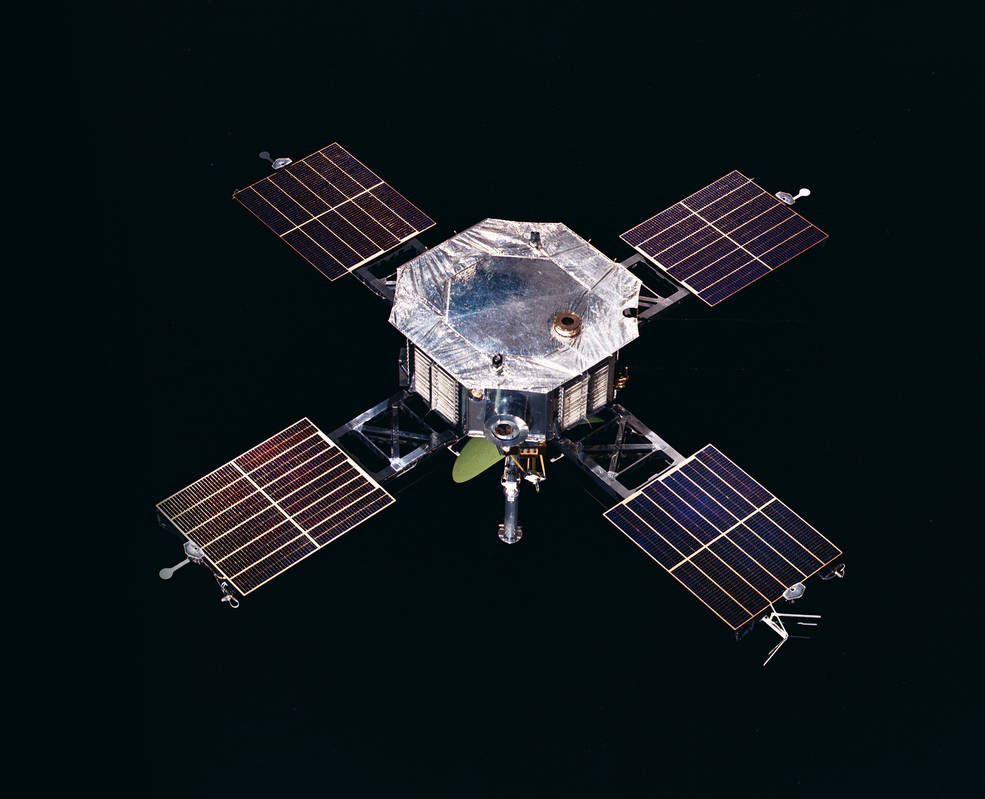
Left: Engineers at Cape Kennedy Air Force Station, now Cape Canaveral Space Force Station
in Florida, prepare Mariner 5 for launch. Middle: Liftoff of Mariner 5 from Launch Pad 12.
Right: Image of the Mariner 5 spacecraft.
In December 1965, NASA approved a project to modify the Mariner 4 backup spacecraft for a mission to flyby Venus in 1967, with the primary goals of studying the planet’s atmosphere and its radiation and magnetic field environment. Major modifications to the spacecraft to operate closer to the Sun included the addition of a Sun shield and reversing the orientation and reducing the size of the solar arrays. Engineers removed the imaging system, since scientists expected the planet’s thick atmosphere to prevent photography of any surface features. The spacecraft conducted seven investigations to study Venus, as well as interplanetary space before and after the encounter:
- The solar plasma probe to monitor the properties of the solar wind.
- The helium magnetometer to measure the direction and strength of the magnetic field.
- The trapped-radiation detector to measure the flux of energetic particles.
- The ultraviolet photometer to detect atomic hydrogen and oxygen in Venus’ upper atmosphere.
- The celestial mechanics investigation to help refine the orbits of Earth and Venus.
- The S-band radio occultation experiment to measure the density of Venus’ atmosphere as the spacecraft passed behind the planet.
- The dual-frequency propagation experiment to provide information on Venus’ ionosphere.
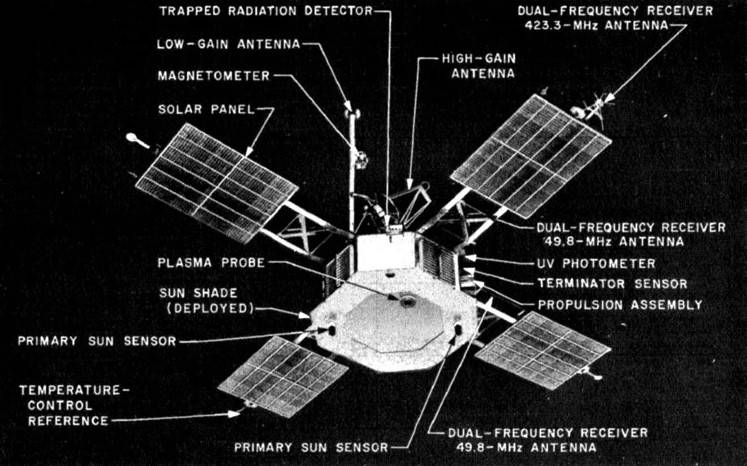
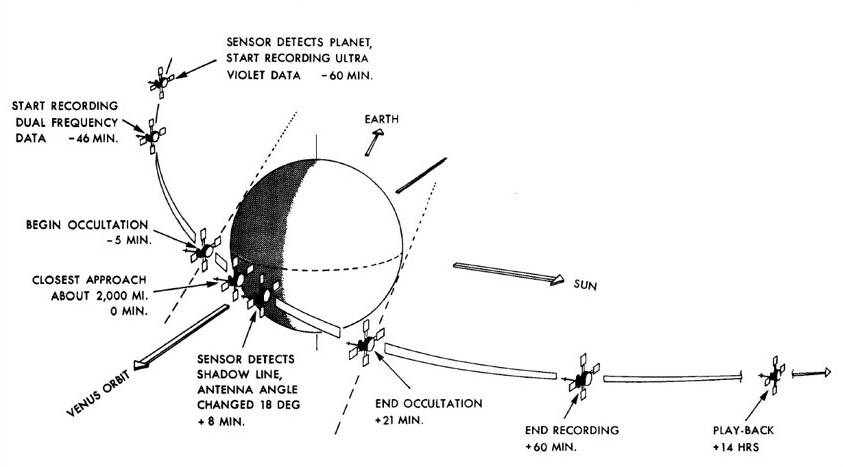
Left: Image of Mariner 5 showing its major components and scientific instruments.
Right: Schematic of Mariner 5’s trajectory during its flyby of Venus.
Following its launch on an Atlas-Agena D rocket, the 540-pound Mariner 5 entered solar orbit on its way to Venus. A course correction maneuver on June 19 refined this trajectory. On Oct. 19, Mariner 5 flew within 2,554 miles of Venus, becoming only the second successful Venus exploration mission in history. The spacecraft provided detailed information about the planet’s atmospheric pressure (75-100 atmospheres) and temperature (527oC), and found no trapped radiation belts around Venus as its magnetic field was only 1% as strong as Earth’s. So despite Venus’ similarity to Earth in terms of size, the spacecraft found a much different world, dispelling visions of Venus as a planet potentially hospitable to life. Although ground controllers briefly regained contact on Oct. 14, 1968, they ultimately lost contact with Mariner 5 on Dec. 4, 1967, and gave up further attempts to communicate with the spacecraft.
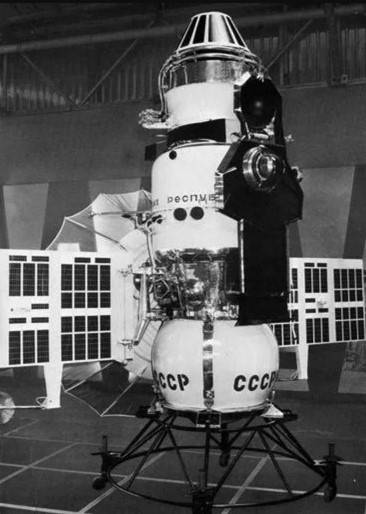
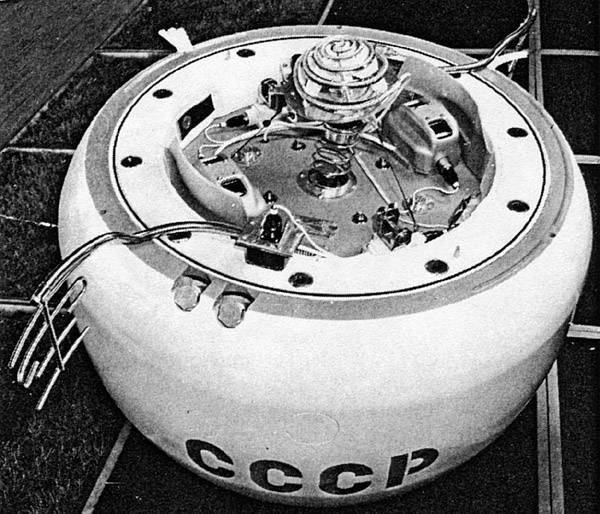
Left: The Soviet Union’s Venera 4 spacecraft, showing the atmospheric entry probe
at bottom. Right: Closeup of the Venera 4 atmospheric entry probe.
Taking advantage of the same launch window to Venus, on June 12 the Soviet Union launched Venera 4, the next in its series of spacecraft to explore the planet and its atmosphere. After a 128-day flight from Earth, on Oct. 18, Venera 4 released its 844-pound entry probe. The capsule entered the planet’s atmosphere, returning data for 93 minutes during its parachute-assisted descent. At an altitude of 17 miles, the craft stopped transmitting, succumbing to the high temperatures and pressures of the Venusian atmosphere. In March 1968, American and Soviet scientists met at the Kitt Peak National Observatory in Tucson, Arizona, to exchange data and compare results from their respective spacecraft. The meeting was one of the first international conferences to discuss results from planetary spacecraft. The two countries jointly published the results from Mariner 5 and Venera 4.
For more on Mariner 5, see https://go.nasa.gov/3mKmgPq


























